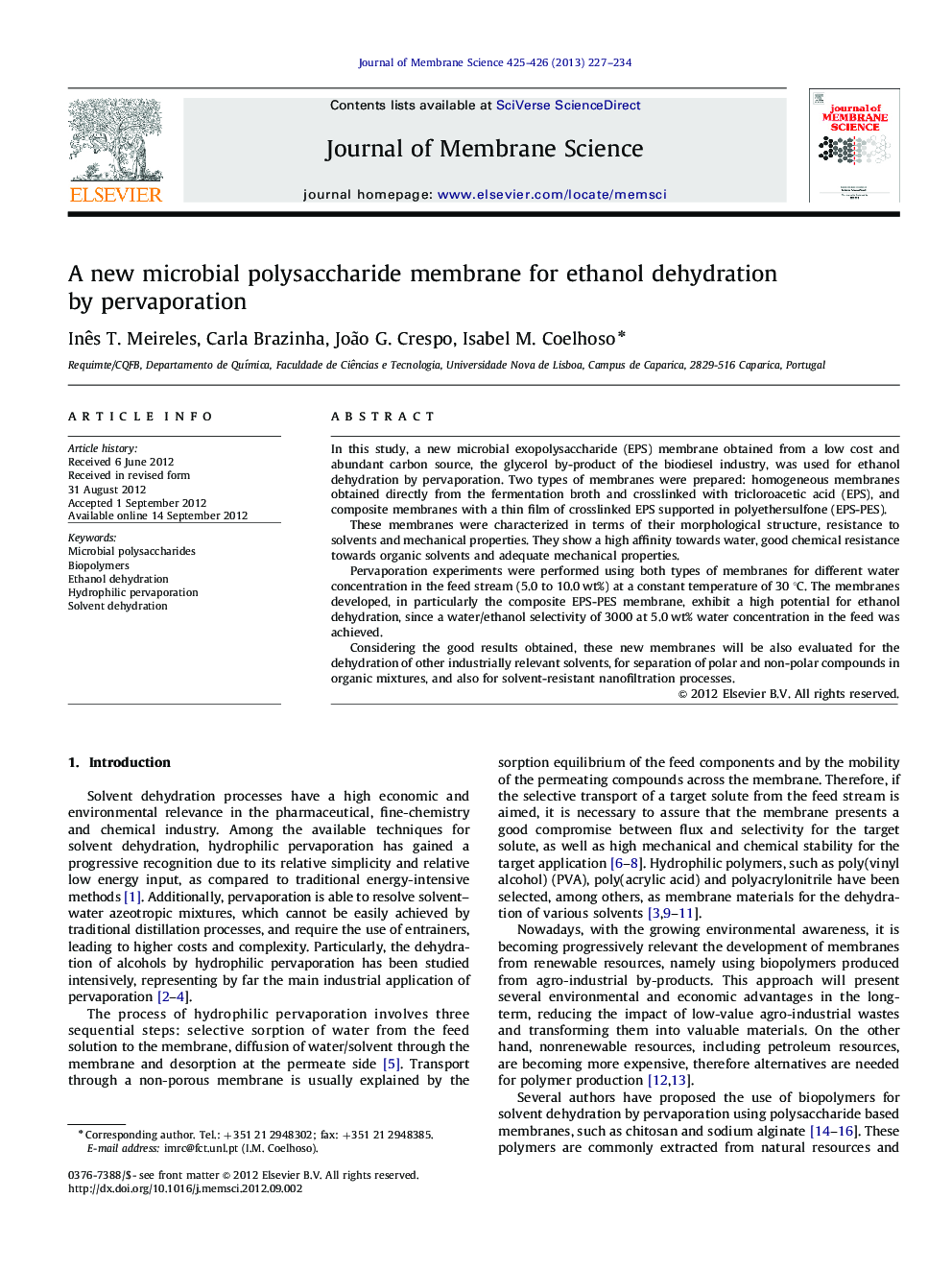| Article ID | Journal | Published Year | Pages | File Type |
|---|---|---|---|---|
| 634737 | Journal of Membrane Science | 2013 | 8 Pages |
In this study, a new microbial exopolysaccharide (EPS) membrane obtained from a low cost and abundant carbon source, the glycerol by-product of the biodiesel industry, was used for ethanol dehydration by pervaporation. Two types of membranes were prepared: homogeneous membranes obtained directly from the fermentation broth and crosslinked with tricloroacetic acid (EPS), and composite membranes with a thin film of crosslinked EPS supported in polyethersulfone (EPS-PES).These membranes were characterized in terms of their morphological structure, resistance to solvents and mechanical properties. They show a high affinity towards water, good chemical resistance towards organic solvents and adequate mechanical properties.Pervaporation experiments were performed using both types of membranes for different water concentration in the feed stream (5.0 to 10.0 wt%) at a constant temperature of 30 °C. The membranes developed, in particularly the composite EPS-PES membrane, exhibit a high potential for ethanol dehydration, since a water/ethanol selectivity of 3000 at 5.0 wt% water concentration in the feed was achieved.Considering the good results obtained, these new membranes will be also evaluated for the dehydration of other industrially relevant solvents, for separation of polar and non-polar compounds in organic mixtures, and also for solvent-resistant nanofiltration processes.
Graphical abstractFigure optionsDownload full-size imageDownload high-quality image (240 K)Download as PowerPoint slideHighlights► A microbial exopolysaccharide (EPS) membrane was obtained from a renewable source. ► Homogeneous and composite membranes of EPS were prepared and characterized. ► The membranes showed high water affinity and good resistance to organic solvents. ► For ethanol dehydration by pervaporation, a water selectivity of 3000 was achieved.
